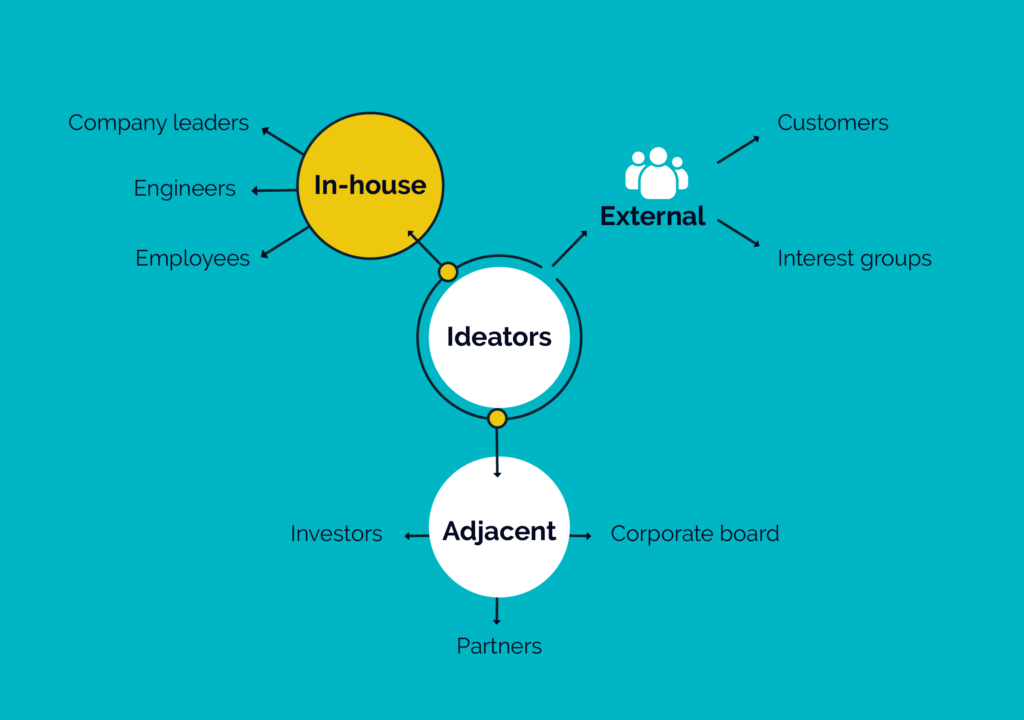Innovation isn’t just about making the most profitable or “cutting-edge” product possible. Instead, it’s knowing how to tap into your industry and customer base to provide the most intuitive solutions with the biggest impacts. For many PMs, that’s a tall order. But it’s not impossible.
By mastering idea management, you can streamline your idea management task list and ensure ideas in the pipeline adhere to company objectives and consumer needs. To do it right, you first need to learn the basics of this wide-reaching process.
What Is Idea Management?
Sophia Gerlach of Detecon International GmbH, and Alexander Brem, Chair of Technology Management at Friedrich-Alexander-Universität Erlangen-Nürnberg, defines idea management like this:
A sub process of innovation management with the goals of effective and efficient idea generation, evaluation, and selection.
This process should be wholly enveloped in the business—which is a living entity that actively interacts with its environment. A business’ processes and objectives revolve around its character, as well as its short-term and long-term goals. It’s not meant to persist in established systems to maintain the status quo of stagnant innovation management.
Some might think, “Of course, I should consider the business as a product manager.” On the surface, that is certainly a part of idea management. Still, the process goes deeper than that.
The Importance Of Idea Management
“[T]hose who believe that environment is created by forces outside their control will not be in an intellectual position to participate in the redesign. An environment will be imposed on them which, however reluctantly, they will be compelled to accept.” - Melvin Anshen
Implementing a holistic approach to idea management can streamline (and generally improve) multiple facets of your product management work.
As Melvin Anshen wrote for Harvard Business Review way back in 1969, “[N]ew business leaders will be those who can stretch their minds beyond the management of physical resources.” But learning to do this is tough.
As a product manager, you’ve got a lot of moving pieces to deal with. You’re expected to monitor existing products’ performance and relevant consumer behavior, while also brainstorming methods to minimize variables like churn. You also need to change new and existing products to fulfill your users’ needs.
Idea management can help with all this by enabling you to:
- Understand your company’s character and objectives as they evolve in real-time
- Apply that understanding as a “business philosophy” through company adaptations to the market fluctuations and social dynamics
- Better prioritize and implement of ideas since they align more smoothly with the business philosophy
- Mitigate non-alignment and uncertainty on new ideas thanks to more direct, active involvement from diverse idea generators
- Reduce churn among users, as idea management helps you keep a pulse on your users’ natural behavioral patterns (and thus, their current needs)
Effective idea management is central to a company’s ability to attain—and sustain—a position of leadership in its industry. There are countless ways to go about it. Generally, it’s best to have the right idea management tool and follow the framework below.
How Idea Management Works
The exact steps in an idea management process will vary by business. Still, experts offer this general six-phase roadmap that can help get any PM started.
1. Preparation
Design an idea management software program or in-office idea submission system in which you can reliably and continuously collect and store ideas from "ideators." This phase of the ideation process may look different between companies.
For instance, a recent Reddit poll showed that many PMs prefer note-taking and recording when conducting user interviews to share insights with the management team.
You can also set up an automated idea management process that passively collects user and stakeholder suggestions continuously.
2. Idea generation
This is where the magic happens. In this phase, your “ideators generate ideas.” Who those “ideators” are depends largely on the types of innovative ideas you’re looking for.
PMs who aim to make idea sharing and open product innovation a part of company culture might include employees. On the other hand, those focused on social impact might rely on clients and “external communities,” such as public stakeholders and interest groups.

How to get inspiration when generating ideas? No doubt, economic factors are important to PMs. But your considerations shouldn’t stop there. Other elements that can influence your idea generation include:
- Technological change
- Political change
- Social change
Businesses can no longer get away with maintaining the status quo. Consumers are increasingly looking to companies that they believe enact social change and make positive contributions to society.
This is why companies increasingly perceive themselves as “‘institutions’ integrated into the social fabric of society” rather than merely detached business entities. According to Forbes, now 77% of these institutions see “citizenship and social impact” as either critical or important.
To gain an edge on your competitors, you must be able to anticipate those technological, social, and political changes fairly and before they emerge and meet your consumers where they are. Inclusive idea management that allows everyone a seat at the table is central to this.
3. Improvement
At this point, you and ideators must face the uncomfortable truth: Not all ideas are practical or relevant. You and your team must determine which ideas miss the mark and filter them out.
However, who comprises that team must be informed by all facets of idea management, including the social and political dynamics. In other words, be mindful of who gets the approval and veto power. Otherwise, you risk inviting cliques and gatekeeping into company innovation.
4. Evaluation
Now that you’ve determined which ideas are most suitable to your business objectives, arrange them into “project clusters” and filter them further to determine which are best and most manageable. There are plenty of methods you can use for this. Notable methods for vetting promising ideas are displayed below.
| Method A | Method B | Method C |
| 1. Test idea 2. Create draft implementation plan 3. Approve or veto plan | 1. Ideators give presentation and develop prototypes 2. Half of ideas are cut with each review round | 1. Ideas are categorized as “low” appropriateness, “inappropriate,” or “appropriate.” 2. Reviewers evaluate “appropriate” ideas only |
5. Implementation
Select the ideas that received the best feedback in the Evaluation stage and prepare them for the transition into project management. Use the idea’s related project cluster to dictate resource and team needs.
As Anshen says, project clusters “offer the important advantages of tailor-made design to fit unique tasks, flexible resource commitments, defined termination points, and an absence of enduring commitment that encourages resistance to radical innovation.” They’re not constrained by the “prescribed patterns” of “functions, products, geography, or projects” that keep your business treading water to maintain the status quo.
6. Deployment
Your new product is ready to go! Now, it’s time for launch and promotion to the target audience. Be attentive to initial and ongoing user feedback to ensure each feature and function of your product or service is well-received and stands up to scrutiny.
Go From Product Manager To Idea Manager
Need more information on how to optimize product management with open innovation? Subscribe to The Product Manager newsletter for regular insights and tips on industry happenings and get the edge on market shift whenever possible.


